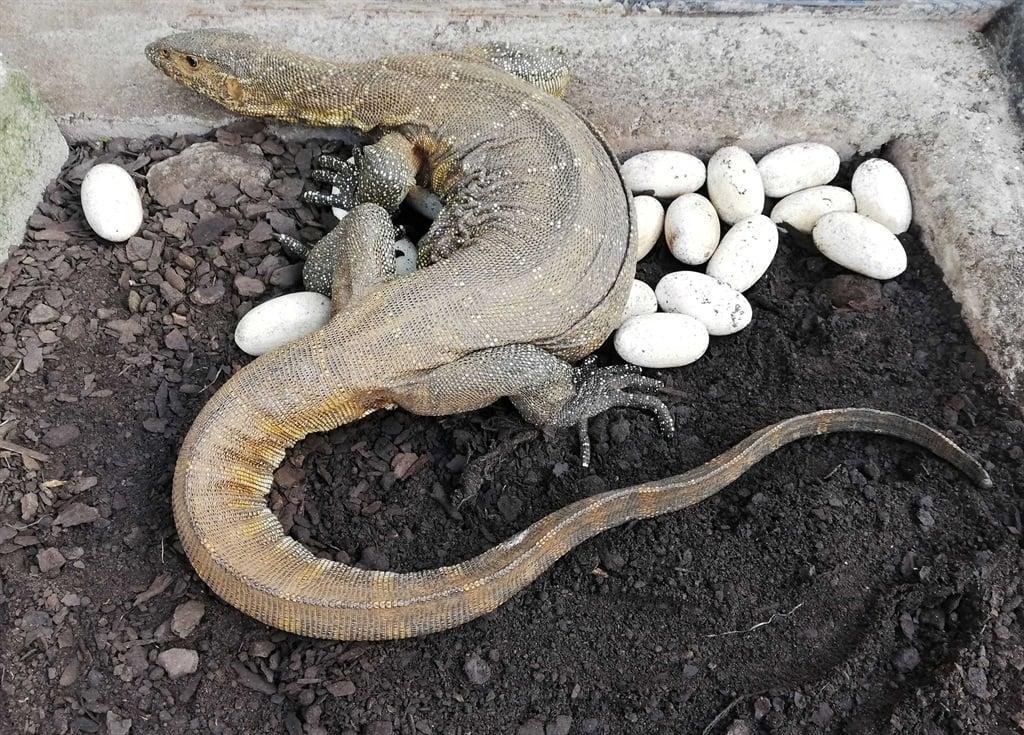Africa-Press – South-Africa. An endangered reptile laid 27 eggs after she was rescued from a garden in Umlazi.
The pregnant adult Nile monitor was taken into the care of South African Association for Marine Biological Research (SAAMBR) herpetologists stationed at Dangerous Creatures in the uShaka Village earlier this month.
She was found in Umlazi attempting to lay her eggs in a domestic garden, and was rescued on Wednesday, 7 June, SAAMBR said.
“The homeowners noticed that the monitor kept returning to the same spot over a period of two weeks, trying to lay her eggs – but, unfortunately, each attempt at laying was unsuccessful.
“As they were concerned for her well-being, they contacted local experts, who brought her to SAAMBR for treatment.
“The monitor was visibly gravid (pregnant) [and] the eggs could be observed bulging from her sides. The herpetological team placed her in a quiet environment with sufficient substrate to dig a hole deep enough to lay her eggs and left her alone.”
The SAAMBR veterinary team examined the monitor on Monday, 12 June and performed radiographs and an ultrasound – which, as expected, showed her coelomic cavity to be full of eggs.
“She was treated with supportive fluids for hydration, and medication to induce the laying process,” the organisation said.
On Tuesday, 13 June, the reptile proceeded to lay 27 viable eggs, which are currently being incubated in SAAMBR’s reptile rehabilitation facility.
“The monitor will have a follow-up medical examination and radiographs to confirm that all her eggs have passed. If she is found to be without any eggs and is eating well, she will be released at a suitable location,” SAAMBR said.
Nile monitors are the largest lizards in Africa, growing to more than two metres in length and feeding on insects, birds, eggs and rodents.
They use their powerful tails to swim through the water as well as in self-defence to whip and intimidate their assailants.
The Nile monitor is a threatened or protected species – and is protected by law in South Africa.
For More News And Analysis About South-Africa Follow Africa-Press






